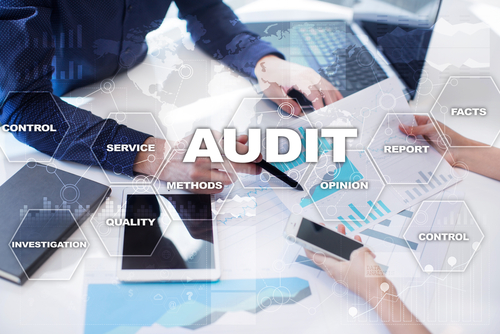VAT in UAE: What Businesses Should Do
The UAE is all set to implement Value Added Taxation (VAT) from January 1, 2018. The expected rate of VAT is 5% on all goods, with exemptions for some basic goods and services such as healthcare, education, and essential food stuff.
Are you ready for VAT?
Get in touch with us now for a free consultation!
Our VAT experts in GCC regions can help you through key challenges that you will face while implementing VAT.
The push towards VAT is part of a common framework for VAT envisaged by the six-member Gulf Cooperation Council (GCC) member states, all of whom are expected to follow suit and implement VAT at any time before January 1, 2019. The underlying rationale is an attempt by these states to move away from over-dependence on oil revenues, and diversify their revenue sources.
The finer details of the VAT regime are yet to become explicit, as the legislation governing VAT rules is not yet released. Nevertheless, considering there are only a few months left for the roll-out, businesses would do well if they start preparing now to ensure a smooth rollover.

Businesses need to primarily assess how the introduction of VAT would impact their business. The immediate consideration should be on the following aspects:
- Coverage: Identify if the products and/or services sold by the business will attract VAT.
- Strategy: Brainstorm on how VAT will impact the overall business, especially pricing and competitiveness, and formulate effective strategies.
- Prepare Internal Systems: Identify how VAT will impact financial and other business systems, and assess the capability of the existing systems to co-opt VAT.
- Evaluate the Ecosystems: Identify contacts and inter-company transactions requiring VAT action, and reach out to them to ensure compliance. Adjust contracts to factor in VAT obligations.
- Timetable: Get the infrastructure and timetable ready for compliance. Conduct training and awareness sessions on VAT implementation, for the benefit of stakeholders.
1. Get Clarity on VAT Coverage in the UAE
The first task for a business is to identify whether the goods and or service they sell is taxable under VAT.
The list specific items which will attract tax is not yet released. Indications are that, about 100 essential food and grocery items, education, healthcare, and social services will be tax-exempt. However, most products and services, and just about all big-ticket items, including electronic and consumer goods, home appliances, cars, jewelry, watches, and other white goods will attract VAT in the UAE. Likewise, many services, including eating-out and entertainment, will also attract VAT. There is no clarity yet on whether some common items, such as air-tickets, will be taxable. Side-by-side, many GCC countries are also planning to introduce excise duties on “sin goods,” such as beverages with high sugar content, deemed harmful to health.
The second consideration for businesses is the threshold limit. Younis Al Khoury, Undersecretary of the UAE Ministry of Finance, announced companies with annual revenues of over Dh3.75 million will be obliged to be registered under the GCC VAT system. Companies whose revenues fall between Dh1.87 million and Dh3.75 million will have the option to register for VAT during the first phase of the VAT implementation, but eventually, all companies will have to register under the system, regardless of the reported revenues, during the second phase of VAT roll-out.
2. Set a Strategy Upfront
A crucial task before companies is to draw out strategies to tackle the potential disruption caused by VAT implementation.
Companies need to evaluate their strategy on multiple fronts.
VAT implementation is likely to have immediate effects on consumer behavior, considering the end customer is expected to bear the ultimate burden of VAT. Many manufacturers, especially white goods manufacturers, plan to absorb all or some of the 5% VAT, to prevent a price-hike, and ensure their products remain competitive in the market. Companies need to deploy tools that capture customer sentiments in real time and be ready with appropriate marketing tools to reach out to customers in real time, to take advantage of the changing sentiments. Real time marketing monitoring tools are a must.
Another critical consideration is the impact of VAT on internal operations. Companies need to align their business model to comply with the VAT requirements. The UAE Ministry of Finance expects businesses to make changes to their core operations, financial management practices, bookkeeping methods, technology stack, and human resource mix, to cope with the VAT ecosystem. Administrative and compliance requirements of VAT will incur cost and resource allocation. Likewise, the introduction of VAT may result in cost of living going up, forcing an upward adjustment of wages. Businesses need to budget for such costs and factor it into their product pricing and overall business strategy.
Businesses operating in other GCC countries would have to consider and co-opt the GST rules in all states they operate in, considering VAT is introduced as a GCC region-wide system. UAE businesses would need to evaluate the impact of the special rules on intra-GCC supplies and acquisitions and factor in the potential implications for their business models.
3. Tweak or Set-Up Internal Systems for Compliance
At a basic level, businesses need to ensure their billing and invoicing system is set up to calculate and add VAT to applicable products and services, automatically. Several items, especially day-to-day groceries will be exempt from VAT, and will be billed side-by-side with several VAT items. Businesses need to ensure their systems not only support VAT, but can identify and accommodate exempted items. Still better, the system needs to be flexible with the VAT rate, which is not set in stone, and can change in future. Businesses would also need to incorporate VAT into their accounting systems and financial systems, and generate reports as per the compliance requirements.
However, VAT is much more than a financial issue and will impact all departments of a business, including finance, marketing, human resources, information technology, procurement, and other departments. Businesses need to tweak their business processes, and set-up systems to accommodate VAT documentation. Possible areas of changes include process forms, templates, and other documentation. While the specifics on the format of reports, when to file returns and other compliance requirements are yet to be awaited, businesses need to get the basic infrastructure ready as soon as possible. Indications are most businesses would have to file VAT returns every three months.
Establishing a sound trial and documentation will be critical to claim possible VAT refund on input items, or VAT paid by the business on raw-materials, as per the rules. VAT is applied on goods and services at each stage of the supply chain. Unless there is sound documentation in the specified format and mode, it may be difficult to claim a refund for the VAT already paid earlier in the supply chain, forcing a heavy burden on the business.
The extent of resources required would depend on the complexity of the compliance process, which in turn is likely to depend on complexity and scale of the business operations. Many countries have simplified compliance norms for small businesses. While the nature of requirements in the UAE is yet to be spelled out, it is essential to get implementation right and integrate VAT as part of the everyday business process.
4. Make Proactive Reach-Outs Through the Ecosystem
It is not enough for a business operating in a VAT regime to set up their internal system. The VAT ecosystem is interconnected, and businesses need to consider their suppliers also, to determine the impact of VAT in the UAE. For instance, businesses engaging in exempt or partially exempt supplies would still need to evaluate the additional cost impact on their purchases made from businesses falling under the VAT regime. Similarly, all businesses need to ensure the invoices they receive are compatible with the new VAT regulations. Most importantly, businesses signing new trade deals or agreements need to factor in a clause which allows them to pass on the VAT rate to the buyers.
Pro-active remedial measures to address potential deficiencies can ensure a more cost-effective and efficient supply chain.
5. Establish a Timetable to Move to Implementation
Businesses need to register for VAT up front. The registration window will open three months in advance of the VAT implementation date. Assuming there is no change to January 1, 2018, date for VAT roll-out, the window for taking VAT registration will open by 1st October 2017. The specifics are yet to unfold, and businesses need to keep a close watch on the dates. Missing the deadline would result in avoidable hassles and extra costs.
Businesses would do well to keep track of the VAT announcements made by the government, through the following means
- Keeping up-to-date on the official press releases and notifications issued by the Ministry of Finance
- Seeking guidance and instructions from the Chamber of Commerce and other institutions
- Tie up with a strategic consultant who will keep track of the developments on a daily and proactive basis, and inform and help the business prepare as required.
Businesses would obviously need to learn the procedures and policies before they can implement VAT, and be compliant with its provisions. Training employees and other stakeholders on how to apply the levy, how to account for the VAT, and how to submit the regular reports and filings to the government, among other things, are essential for seamless implementation. While businesses would obviously have to wait for the VAT legislation to roll out for clarity on such issues, they would do themselves a favor by setting up the basic training infrastructure in place. They would also do well to allocate training schedules in advance, to ensure minimal disruption to their core operations when implementation sets in.
Businesses take VAT lightly at their own peril. Failure to register for VAT, not applying VAT correctly, not submitting VAT returns, or failure to adhere to any compliance requirement would attract severe penalties. While the government is in the process of defining the fines and other penalties for non-compliance, it is certain non-compliance would be costly for the business. Ignorance of the law is not an excuse, and it makes no difference whether the violations or noncompliance were deliberate or a result of some honest mistake or misunderstanding.
While it may be early days to consider hiring in-house VAT professionals, businesses may require additional hands to handle accounts, IT, and documentary controls for VAT. Businesses would do well to partner with competent consultants and software developers, especially those who have experience with VAT and taxation regimes of other countries, such as India and Europe. Instituting a seamless and automated software would take the load off the requirements, sparing enterprises the need to hire additional hands to do the manual work, and allowing them to focus on their core businesses rather than on compliance headaches.
Planning in advance and striking the right partnerships would allow the business to convert a potential crisis into an opportunity, and a potential cost-center into a profit-center spearheading organizational efficiency.
Stay up to date on what's new

Featured Blogs
Stay up to date on
what's new

























































